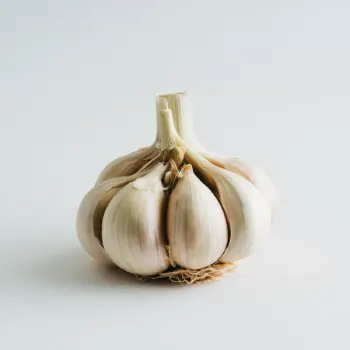


Canned
Garlic stored in a can, typically minced or in paste form, providing long-term storage and ease of use.
Jarred
Garlic preserved in a jar, either whole, minced, or in paste form, offering convenience and a longer shelf life.
Minced
Garlic cloves finely chopped into small pieces, commonly used for even flavor distribution in dishes.
Pureed
Garlic cloves blended into a smooth paste, used to infuse a strong garlic flavor into various recipes.
Roasted
Garlic cloves or bulbs that have been cooked in an oven or on a stove, offering a sweeter, less intense flavor.
Powdered
Dehydrated and ground garlic, convenient for a quick and mild garlic flavor in seasoning blends and recipes.
Fresh bulbs
Whole, unprocessed garlic bulbs, ideal for extracting individual cloves or using whole in roasting.
Pre-peeled cloves
Garlic cloves with the skin removed, ready for immediate use in cooking or further processing.




garlic powder: McCormick
jarred garlic: Spice World
minced garlic: Spice World
fresh garlic bulbs: Christopher Ranch

Infusing: Garlic can be infused in oil to create a flavorful base for cooking or as a finishing oil. Simply simmer sliced or whole garlic cloves in oil over low heat until the garlic is softened but not browned.
Roasting: Whole garlic bulbs or individual cloves can be roasted to develop a sweet, mellow flavor. Cut the top off a bulb of garlic, drizzle with oil, wrap in foil, and roast at 400°F (200°C) for 40-60 minutes. The garlic is done when the cloves are soft and caramelized.
Sautéing: This is one of the most common methods of cooking garlic. Sauté minced or chopped garlic in oil or butter over medium heat until it’s fragrant but not browned, which usually takes about 30 seconds to a minute.




